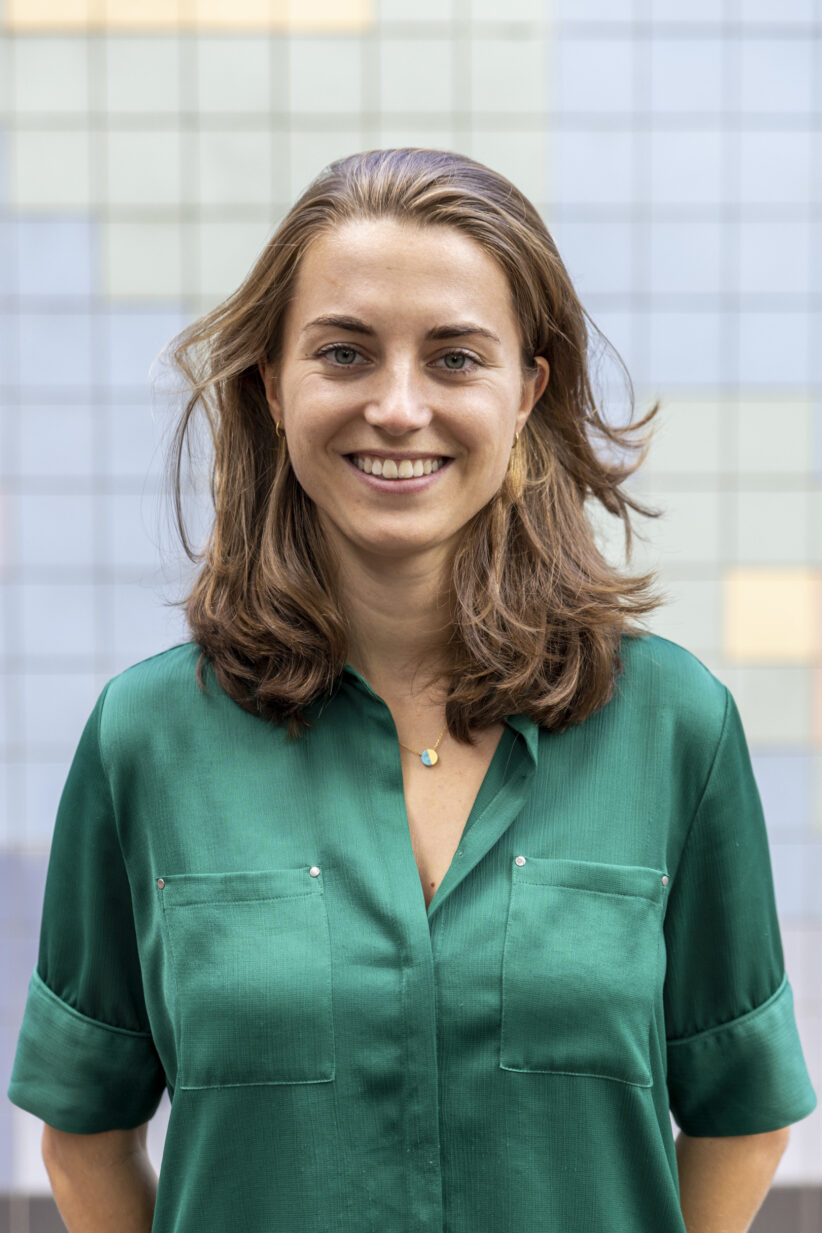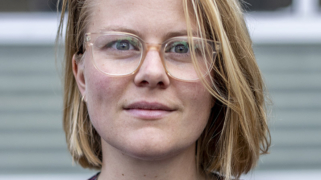Interview met de jonge oprichter van Curiosity Learning
Een van de leukste dingen aan mijn baan vind ik dat ik veel mensen tegenkom met een passie of een missie. Wanneer zij vol vuur, of juist bedachtzaam, vertellen over het thema dat hun aan het hart gaat, hang ik aan hun lippen. Zo ook bij Ron Berlinski, 21 jaar en oprichter van Curiosity Learning++Curiosity LearningHun motto: spark curiosity and allow anyone to learn anything they are curious about in a motivating and cooperative environment. Lees meer , een organisatie die leren leuk maakt, gerund voor en door jongeren.
Ron was 18 toen hij zijn schooldiploma haalde op de Amsterdam International Community School en inmiddels flink wat ideeën rijker over hoe leren op school beter én leuker kan. Alhoewel het huidige onderwijssysteem voor sommige leerlingen goed werkt, ziet hij ook veel jongeren die zich gelaten door de onderwijsmolen laten draaien (“nog 2 jaar en dan zijn we ervanaf”). Daarnaast weet hij, ook uit eigen ervaring, dat het huidige onderwijssysteem voor een grote groep jongeren averechts werkt en nieuwsgierigheid en lol in leren juist in de weg staat. Dit is geen nieuwe informatie. Al jaren pleiten experts++NieuwsgierigheidKlik hier voor een wetenschappelijk overzicht van het belang van nieuwsgierigheid bij leren. Zie ook dit artikel van het platform Samen Onderzoeken. op het gebied van onderwijs en neuropsychologie voor een onderwijssysteem waar nieuwsgierigheid en autonomie centraal staan.
Wie serieus neemt hoe onze hersenen werken, zou het onderwijs radicaal anders inrichten. Dan zou de nieuwsgierigheid van de leerling het uitgangspunt zijn en niet het lesboek. – Harold Bekkering, hoogleraar sociaal-cognitieve neuropsychologie
Maar waarom verandert er dan zo weinig? Niet tevreden met het leersysteem op school, nam Ron op zijn zeventiende, toen hij zelf nog op school zat, het heft in eigen handen. Hij wil jongeren laten ervaren wat leren óók kan zijn. Met zijn organisatie Curiosity Learning biedt hij jongeren een plek waar zij hun eigen nieuwsgierigheid achterna kunnen gaan. Ik had het genoegen om hem te mogen interviewen en te luisteren naar zijn ideeën om liefde voor leren aan te wakkeren.

Ron Berlinski, oprichter van Curiosity Learning
Maker: Curiosity Learning
Rechten: Alle rechten voorbehouden
How did you experience your time in school?
“I had a fairly positive experience in school. Socially, it was great; luckily, I had a lot of friends and never got bullied. However, in terms of learning, I found it disappointing. As a child, I loved learning and did so eagerly at home, but in school, it wasn’t challenging. Learning at school wasn’t as fun as learning outside of school. This frustrated me immensely because I had to be at school every day from 8:30 to 16:30, while I felt I could spend my time better.”
You did a lot of learning in your free time. What kind of learning?
“That was self-directed learning. I would look up things I was interested in and watch a lot of YouTube videos. For example, when I was learning Photoshop, I found that I learned best by doing. It was a process of trial and error, and eventually finding the right way. For me, this kind of learning was much more enjoyable and effective than school learning.”
How did this self-directed learning differ from learning at school?
“At school, it was all about tests and grades. The emphasis wasn’t on actually understanding or being curious, but on getting good marks++CijfersLees ook ‘Hoe cijfers en prestratiedruk leren in de weg zitten’ in dit artikel van de Correspondent. . Even with projects like CAS (Creativity, Activity, Service), it felt more like a formality to be ticked off rather than something truly integrated into the education. Often, it seemed like the value was placed on the final grades rather than the learning process itself. And that’s unfortunate, because the grades represent a curriculum that’s preset. There isn’t much room for your own exploration.”
What does learning mean for you?
“For me, learning is about bridging the gap between the unknown and the known.“Learning is about bridging the gap between the unknown and the known. It’s not just about acquiring knowledge but also about developing skills and attitudes.” It’s not just about acquiring knowledge but also about developing skills and attitudes. I believe there’s a big difference between studying and learning. Studying often involves preparing for a test, while learning is about developing a deep interest and understanding. This can happen through self-exploration, experimenting, and being curious.”
How do you view the role of teachers in facilitating learning?
“I think teachers can function more as mentors or guides. They can ask questions that encourage students to think for themselves and find their own answers, rather than just transmitting knowledge. Ask ‘how do you think you can get there? What makes the source valuable? How do you know it’s true?’ These questions aren’t necessarily teaching someone, but more like guiding them towards an answer. It’s about facilitating a space where learning can happen, which is more than just teaching. I actually think there is a big difference between teaching and learning, and that’s where some people can get mixed up.”
“A teacher can teach, but that doesn’t mean the student will learn. I’ve noticed that there’s a big focus on improving teaching: ‘how do we get the teachers to teach better?’ However, you’re asking the wrong question. The question should be: ‘how can we make sure the learners learn better?’ And in my opinion, that’s not necessarily only by teaching. There’s a lot of potential for learning that’s outside of teaching, such as exploring and self-research.”“There’s a lot of potential for learning that’s outside of teaching, such as exploring and self-research.”
So, what made you start the Curiosity Club?
“Well first of all, I was really frustrated. I did my research, and I saw many people talking about the educational system and that it doesn’t stimulate curiosity and learning. Then why isn’t it changing? What’s happening here? So, at that point I decided I was going to try something and push for change, even though it might not work. That is how I started my first Curiosity Club, which grew into today’s voluntary-based organisation Curiosity Learning. Basically, we provide a space for adolescents to create and learn anything they’re curious about by creating projects together. “
Was it easy?
“Yes and no. When I proposed my idea for a Curiosity Club at my own school they were enthusiastic, and they happily provided me with a space for the club. After the first club it was also relatively easy to find other schools who wanted to start a Curiosity Club. But then Covid hit… we tried to do it online, but that doesn’t work with this. So, after Covid, we started up again and ran into a next challenge. We found students who wanted to open a club at their school, but the school wasn’t cooperating much. To prevent this from happening (when a student is enthusiastic to learn you don’t want them to deal with the hassle of a resisting school) we asked schools for a small commitment fee. This however, resulted in schools drawing back or them asking something in return. They asked for more student registrations, good PR and happy parents. Why would a positive learning experience for the students not be a valuable return?“Why would a positive learning experience for the students not be a valuable return?” But challenges are part of the journey! On the upside: our organisation is now run by 9 young volunteers who believe in the mission.”

Kinderen leren door hun nieuwsgierigheid te volgen.
Maker: Curiosity Learning
Rechten: Alle rechten voorbehouden
How does a Curiosity Club work?
“Curiosity Clubs are student-run clubs, after school hours. They can take place at schools, but also at libraries or other locations. A Curiosity Club lasts five months, during which students get together for 1 or 1,5 hour per week. The initiator of a Curiosity Club, always a young person, will guide the club throughout those five months. During this learning journey we provide each guide with training, support, resources and a community. Also, joining a Curiosity Club is never mandatory. This means that every kid is there that week because they want to be there. And it’s really amazing to see what that results into. One time we had a teacher come in who said that a first-year student who chose to learn about atomic orbitals had better knowledge on the topic than fifth-year students.”
To be fair, I have the assumption that an after school curiosity club mostly attracts young people from higher SES/educated backgrounds. Am I wrong?
“Curiosity Clubs are open to everyone, and I believe curiosity is the basis for genuine learning for all.“I believe curiosity is the basis for genuine learning for all.” The clubs are especially appealing those who lack challenge because it lets you dive as deep into a topic as you’d like. We’ve had students from vmbo, havo and vwo. The focus on grades in the educational system means students don’t always see the value of the club if it won’t give them credits or directly help them get a job or money. This culture of grades and test taking and needing to study for the test is so ingrained, not only in the system, but also within the students themselves. They don’t associate learning with fun. The Curiosity Club is one way to show that it can be different.”
Do you think schools with new approaches, such as Agora++AgoraAgora-onderwijs is een vorm van algemeen bijzonder onderwijs die uitgaat van volledige autonomie van het lerende kind en diens eigen leervraag. , are a big step towards change?
“There are a lot of schools popping up that are doing things differently, like Agora++NieuwsgierigheidLees ook ‘Voor deze schoolleider begint leren bij nieuwsgierigheid’ van de Correspondent. or Sudbury++SudburyDe structuur van een Sudbury-school is gebaseerd op directe democratie. Leerlingen en staf hebben een gelijke stem in de volledige organisatie van de school. Kinderen zijn volledig verantwoordelijk voor hun eigen leven, leren en toekomst. Er zijn geen opgelegde klassen, leerplannen of overhoringen., which is really nice. In my opinion, however, change will be much slower if we wait for new schools with new systems.“Change will be much slower if we wait for new schools with new systems.” Most parents are reluctant or can’t afford sending their kids to ‘new schools.’ They want what is best and safest for their kids and mainstream education is the safest option. I think to really accelerate change, we need to start with something that can exist and grow alongside mainstream education (like Curiosity Club haha). I see huge value in the recognition of non-formal education: learning that takes place alongside learning in schools. I think scouting (the largest non-formal education movement) is a really great case study for non-formal education, being the largest non-formal education movement globally. If non-formal education would be a bigger part of our society, it could even justify shorter school days. Actually, both the UN and EU are pushing for the recognition of non-formal education. Recognising learning, no matter where or how it was acquired, is the first step for educational transformation.”
Je eigen Curiosity Club?
Heb je interesse gekregen in een Curiosity Club op jouw school of waar dan ook? Je kan je nog aanmelden! Curiosity Clubs starten 2 keer per jaar en in september organiseren ze laagdrempelige workshops om leerlingen te enthousiasmeren. Behalve een plek, hoef je als school of organisatie nauwelijks iets te regelen; alles wordt namelijk voor en door jongeren georganiseerd. Fantastisch toch?
Check hun website voor meer info of mail naar curious@curiositylearning.org.






